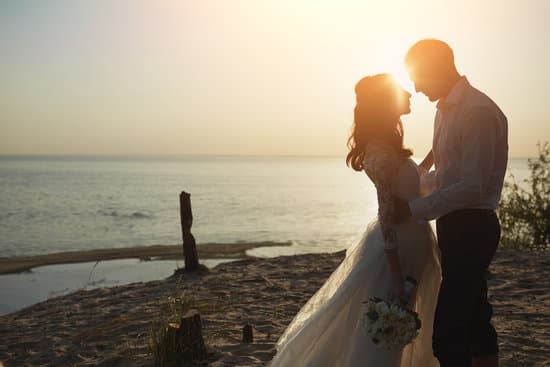Your wedding day is one of the most important and memorable days of your life. As you plan for this special occasion, you want to ensure that every detail is perfect, including the floral arrangements.
One of the key questions on your mind may be, “How much florist for wedding?” This article will guide you through the process of setting your floral budget, understanding the costs, finding the right florist, and making the most of your budget to create the perfect scene for your big day.
When it comes to planning a wedding, flowers play a significant role in enhancing the overall ambiance and aesthetics. From elegant bouquets to stunning centerpieces, choosing the right floral arrangements can transform any venue into a romantic and enchanting space. However, before delving into the world of wedding flowers, it’s essential to determine your floral budget and understand what factors can affect the cost.
In this article, we will explore various aspects of wedding floral arrangements and budgets. From breaking down expenses to determining whether to hire a professional florist or take on a do-it-yourself (DIY) approach, we will provide insights and tips to help you make informed decisions about one of the most beautiful elements of your special day.
So let’s begin by setting the scene for your big day and unraveling the mystery behind how much florist for wedding truly is.
Determining Your Floral Budget
When determining your floral budget for your wedding, there are several factors to consider in order to ensure that you get the most out of your budget. The first step is to establish a realistic overall budget for your wedding flowers. This should take into account the size of your wedding, the number of guests, and the overall theme and aesthetic you want to achieve.
Another important aspect to consider when determining your floral budget is the season in which your wedding will take place. Certain flowers may be more expensive or harder to come by depending on the time of year. It’s also important to consider any additional decorative elements that you may want to incorporate into your floral arrangements such as vases, candles, or other decorative accents.
In addition to these considerations, it’s crucial to factor in any additional costs such as delivery fees, set-up charges, and taxes when determining your floral budget for your wedding. By carefully considering all these aspects, you can ensure that you have a clear understanding of how much florist for wedding cost and can make informed decisions when working with a florist to bring your vision to life on your special day.
Understanding the Cost of Wedding Flowers
When it comes to planning a wedding, one of the most important elements to consider is the floral budget. Many couples often wonder how much florist for wedding services will cost, and there are several factors and variables that come into play when determining the cost of wedding flowers.
One of the primary factors that can influence the cost of wedding flowers is the type and quantity of flowers you choose. Certain types of flowers may be more expensive than others, and if you have your heart set on rare or out-of-season blooms, this can significantly impact your floral budget. Additionally, the number of arrangements needed, such as bouquets, boutonnieres, centerpieces, and ceremony decorations, will also affect overall costs.
Another variable to consider when understanding the cost of wedding flowers is the size and complexity of the arrangements. Larger, more elaborate floral designs will naturally require more flowers and foliage, driving up costs. Similarly, intricate designs such as cascading bouquets or floral arches may also necessitate more labor and expertise from your florist.
Moreover, the location and season of your wedding can also impact the cost of wedding flowers. Prices for floral materials can vary depending on where you are located geographically, as well as whether certain flowers are in season or not at the time of your event. Considering these factors when setting your floral budget is crucial in determining how much florist for wedding services will ultimately cost.
| Factors Influencing Floral Costs | Variables Affecting Floral Budget |
|---|---|
| Type and quantity of flowers | Size and complexity of arrangements |
| Location | Seasonality |
Breakdown of Expenses
When it comes to planning the floral arrangements for your wedding, it’s important to understand the breakdown of expenses. From bouquets to centerpieces, each floral element adds to the overall cost of your wedding flowers. By knowing what factors contribute to the expenses, you can better allocate your floral budget and make informed decisions when working with a florist.
Cost of Wedding Bouquets
The bridal bouquet is often the focal point of wedding flowers, and its cost can vary depending on the size, type of flowers, and design. Bridesmaids’ bouquets and flower girl posies are also part of the expense. Factors that contribute to the cost include the types of flowers chosen, whether they are in-season or exotic, as well as any special embellishments such as ribbons or crystals.
Expense of Ceremony Flowers
From altar arrangements to pew decorations, the flowers used in your ceremony space will also add to your floral budget. The size and complexity of these arrangements will determine their cost. It’s important to consider whether these ceremony flowers can be repurposed for the reception to get more value out of them.
Costs Associated With Reception Centerpieces
One major expense when it comes to wedding flowers is the centerpieces for the reception tables. Factors that influence their cost include the type and quantity of flowers used, as well as any additional decor elements such as candles or greenery. It’s important to communicate with your florist about your vision for centerpieces so they can provide accurate pricing based on your preferences.
Understanding these different components that make up the expense of wedding flowers is crucial when determining how much a florist will charge for your special day. By knowing what factors contribute to costs such as bouquets, ceremony flowers and reception centerpieces, you have a better understanding of how much a florist might charge for a wedding.
How to Find the Right Florist for Your Wedding
When it comes to finding the right florist for your wedding, there are a few key tips and pieces of advice to keep in mind. First and foremost, it’s important to start early.
The best florists often get booked up quickly, especially during peak wedding season, so be sure to start your search as soon as you have a date set for your big day. This will give you plenty of time to research and meet with potential florists before making a decision.
Another important factor to consider is style. Not all florists have the same aesthetic or specialize in the type of arrangements you are looking for. Take some time to look through each florist’s portfolio and see if their style matches the vision you have for your wedding flowers. Whether you prefer modern minimalist arrangements or lush, romantic blooms, finding a florist who aligns with your style will be crucial.
Additionally, don’t forget to ask about pricing and packages when meeting with potential florists. As part of determining your floral budget, it’s essential to understand how much each florist charges for their services and what is included in their pricing. Some may offer package deals that include everything from bouquets to centerpieces, while others may charge à la carte for each arrangement.
| Tips | Advice |
|---|---|
| Start early | Research each florist’s portfolio |
| Consider style | Ask about pricing and packages |
DIY vs Hiring a Professional
When it comes to wedding flowers, one major decision is whether to opt for a do-it-yourself approach or to hire a professional florist. Each option has its own set of pros and cons, so it’s important to carefully weigh your choices before making a decision.
DIY Flower Arrangements
One of the biggest advantages of creating your own floral arrangements is the potential cost savings. By purchasing flowers in bulk from a wholesale supplier and arranging them yourself, you can significantly cut down on expenses. Additionally, DIY arrangements allow for complete customization, giving you the opportunity to create exactly the look you desire for your wedding day.
However, there are some drawbacks to consider as well. DIY flower arrangements require a significant time commitment, which may not be feasible for couples with busy schedules leading up to the big day. In addition, there is a learning curve when it comes to arranging flowers, and mistakes can be costly if not handled correctly.
Hiring a Professional Florist
For many couples, hiring a professional florist is the preferred choice due to the convenience and expertise they offer. A professional florist will work with you to bring your vision to life while handling all the details and logistics involved in sourcing and arranging the flowers. This allows you to focus on other aspects of wedding planning without added stress.
Of course, hiring a professional florist typically comes with a higher price tag compared to DIY options. However, this expense often pays off in terms of quality and overall experience. Professional florists have the knowledge and experience needed to create breathtaking floral designs that will truly elevate your wedding decor.
Ultimately, whether you choose to go DIY or hire a professional florist depends on your budget, time constraints, and personal preferences. It’s important to carefully consider both options before making a decision that will impact the overall look and feel of your special day.
Real-Life Wedding Floral Budgets
When it comes to planning a wedding, one of the biggest factors to consider is the floral budget. Many couples wonder how much florist for wedding will cost and what they can expect to pay for their dream arrangements. To help you determine a realistic floral budget for your special day, here are some real-life wedding floral budgets with examples and insights:
- Traditional Wedding: For a traditional wedding with a large guest list and multiple floral arrangements, the average cost of flowers can range from $3,000 to $6,This includes bouquets, boutonnieres, ceremony décor, and reception centerpieces.
- Intimate Wedding: Couples planning an intimate wedding with a smaller guest count can expect to spend anywhere from $1,500 to $3,000 on flowers. This budget typically covers bridal party flowers, ceremony flowers, and minimal reception décor.
- Luxury Wedding: For those looking to have an extravagant floral display at their luxury wedding, the cost can exceed $10,000 or more. Elaborate installations, premium blooms, and customized designs contribute to the higher price tag for luxury weddings.
Understanding these real-life wedding floral budgets can give you insight into how much you should allocate for your own wedding flowers. Keep in mind that your specific floral budget will depend on various factors such as location, seasonality of flowers, and the complexity of your desired arrangements.
In addition to setting a realistic budget based on these examples and insights, it’s important to communicate openly with potential florists about your expectations and financial constraints. A reputable and experienced florist will work with you to create stunning floral designs that align with your budget without compromising on quality or style. Don’t be afraid to ask for itemized quotes and explore different options for maximizing your floral budget without sacrificing the beauty of your wedding decor.
Making the Most of Your Floral Budget
When planning for your wedding, the cost of flowers can quickly add up. However, there are ways to make the most of your floral budget without sacrificing the beauty of your arrangements. Here are some creative ideas and alternatives to consider when working with a florist for your wedding:
- Opt for in-season flowers: Choosing blooms that are in season can significantly reduce the overall cost of your floral arrangements. Not only are these flowers more readily available, but they also tend to be less expensive than out-of-season varieties.
- Consider greenery: Incorporating lush greenery into your floral arrangements can add depth and texture while keeping costs down. Greenery such as eucalyptus, ferns, or ivy can create a beautiful and natural look for a fraction of the price of more elaborate blooms.
- Repurpose ceremony flowers: If you’re having both a ceremony and reception at the same venue, consider repurposing ceremony flowers as part of your reception decor. Altar arrangements or pew decorations can easily be moved to adorn tables or other areas at your reception site, getting double duty out of your investment.
These creative ideas and alternatives can help you maximize your floral budget while still achieving stunning results on your wedding day. By working closely with your florist and being open to different options, you can create beautiful arrangements that complement the overall aesthetic of your special day.
Conclusion
As you prepare for your special day, it’s important to consider the role that floral arrangements will play in setting the scene and creating a beautiful atmosphere. Determining your floral budget can be a daunting task, but with careful planning and consideration of various factors and variables, you can ensure that your wedding flowers are a perfect fit for your vision.
From bouquets to centerpieces, understanding the breakdown of expenses will help you make informed decisions about where to allocate your budget.
Finding the right florist for your wedding is crucial to ensuring that your floral arrangements reflect your style and preferences. While DIY options may seem cost-effective, hiring a professional florist can provide valuable expertise and save you time and stress leading up to your big day. Real-life wedding floral budgets offer insights into what other couples have spent on their own weddings, serving as helpful examples for setting realistic expectations.
To make the most of your floral budget, consider creative ideas and alternatives that align with your vision while also being mindful of costs. Whether it’s opting for seasonal blooms or incorporating non-traditional elements into your arrangements, there are plenty of ways to achieve stunning results without breaking the bank. With careful planning and the right florist by your side, you can create the perfect floral touch for your special day at a budget that works for you.
Frequently Asked Questions
Is It Cheaper to Do Your Own Wedding Flowers?
Doing your own wedding flowers can be cheaper if you have the time, skills, and resources to do so. However, it also requires a significant amount of time and effort, as well as a good understanding of floral arrangements. For some couples, the cost savings may outweigh the extra work involved in DIY wedding flowers.
Who Pays for Wedding Flowers?
Traditionally, the couple getting married pays for their own wedding flowers. However, in some cases, other family members may offer to contribute or cover the cost of specific aspects of the wedding, including the flowers. It ultimately depends on individual family dynamics and financial situations.
How Do You Figure Out How Many Flowers to Get for a Wedding?
Determining how many flowers to get for a wedding depends on various factors such as the size of the venue, how many guests will be in attendance, and the types of floral arrangements needed. Couples should consider how they want their flowers to be used – like bouquets, centerpieces, or decorative elements – as well as any specific flower preferences they might have.
Consulting with a florist can help provide guidance on figuring out the right quantities for each type of arrangement needed for the big day.

I have been involved in marriages for over 20 years helping couples and singles understand more about them.





